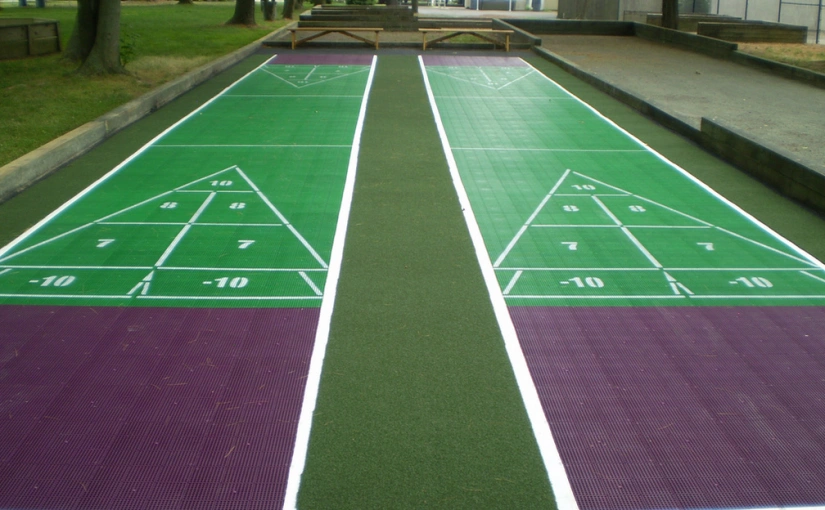
Are you a fan of shuffleboard? Let’s dive into the rules of shuffleboard that make this game exciting! Whether you’re a beginner or an expert, having a good understanding of the basics is crucial to enjoying every slide on the board.
Shuffleboard, with its roots tracing back centuries, is more than just a game of precision; it’s a social affair where every slide and strategic move counts. In this comprehensive guide, we delve into the rules that govern this classic pastime and discover the distinctness that makes shuffleboard both an art and a sport.
This is your comprehensive guide to discovering the secrets that turn a casual game into a thrilling competition. Together, we will explore the fineness of the shuffleboard landscape, unlocking the tactics that elevate it from a friendly match to a battle of fun and strategy.
So, come and join us as we uncover the rules of shuffleboard, where every slide narrates a story, and every score is a testament to your expertise in the shuffleboard arena. Let the games begin!
Basic Rules Of Shuffleboard
A coin is tossed to decide who goes first; the team or a player who won the toss has the choice to go first himself or offer the opponent to go first.
Shuffleboard can be played one-on-one or in teams of two or four.
In singles game, both the players stand at the same end and shoot all the pucks to the other end, while in team games, players from both sides stand on both ends. Players from the same teams cannot stand on one end.
Only one player or team can score per end in the table shuffleboard.
Points are only counted for the pucks ahead of the opposite side’s furthest puck.
Pucks are only considered worth a score if they wholly lie in between lines, not touching any line.
The team who won the round is the first to shoot in the next round.
A game is won based on some pre-determined score both sides agreed to; the side reaching first to that score wins the game. Usually, 15 or 21 in table shuffleboard and 75 in deck shuffleboard, or a side scoring more after eight rounds.
These are the basic rules of shuffleboard. There are some exceptions to the rules mentioned above depending on the type of game you play.
Here are some of them:
Horse Collar Shuffleboard
The horse collar shuffleboard is different than the traditional knockoff shuffleboard. A player or a team slides all their pucks; the score is counted once all the pucks are used. Now, the second player or team slides all the pucks, and the score is counted once all the weights are used. To be eligible for scoring in a horse collar game, one of the pucks must lie in a 3-point zone, and all the weights must cross the foul line.
Hanger rules are different for horse collar shuffleboard, as a hanger will award 13 points if a puck is hanging at the end of the table but not in the corner, and if it is hanging in the corner, the reward is 26 points. To be declared the winner in this game, one must reach a total of 51 points and possess a hammer. Simply achieving 51 points is insufficient; the player or team must also have the hammer to claim victory.
Shuffleboard Crazy Eight Rule
In shuffleboard crazy eight rule, a side slides all four pucks at once. The side following will have to knock off the first one’s pucks. All four weights fired by the first side must cross the foul line and must stay on the table. If any of the pucks fall off the table or remain behind the foul line, the game cannot proceed. The team following second must knock off all pucks thrown by the first side one by one. If any of the pucks of the first side remained on the table, no one scores, and the situation is called a hickey. If any of the above conditions is not met, no one scores.
10 Off Shuffleboard
A deck shuffleboard rule where 10 points are minus from the score if your weight slides in the region named 10 off. It can even result in a minus score. It lies just behind the scoring area, also known as the kitchen. The penalty is not valid if the weight is touching any of the lines of the kitchen area.
Knock Off Shuffleboard Rule
Knockoff in shuffleboard is when pucks are aimed to get knocked off of the scoring area by oppositions. Knockoff is used in traditional and horse collar shuffleboard games. The team’s sliding pucks second has the advantage here. The last eight of the side shooting second has a hammer, an advantageous situation to knock the opposition out of the scoring area.
Hammer In Shuffleboard
A hammer is an advantageous situation in traditional and horse collar shuffleboard where a team sliding weights second has the advantage to knock the opposition out of the scoring zone. The hammer is decided at the toss. The hammer is decided at the toss; typically, the team that wins the coin toss chooses to place their weights in the second position so they can have the benefit of knocking the opposition’s weights out of the scoring area.
Hickey
Hickey is a situation in crazy eight shuffleboard. It happens in two cases. First, if any of the weights of the team sliding first fall off the table or remains behind the foul line or, the side sliding weights second failed to knock off every opposition weight.
Conclusion
Now that you have a solid understanding of the rules of shuffleboard, you are ready to hit the court with confidence. Remember to practice and enjoy the game, embracing the combination of skill, strategy, and friendly competition that shuffleboard offers. Happy shuffling!
